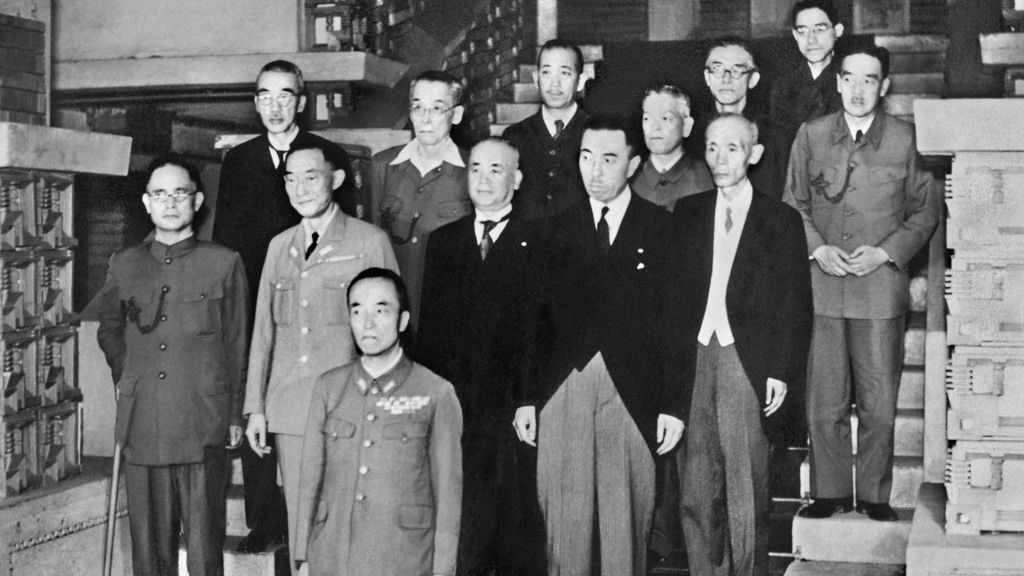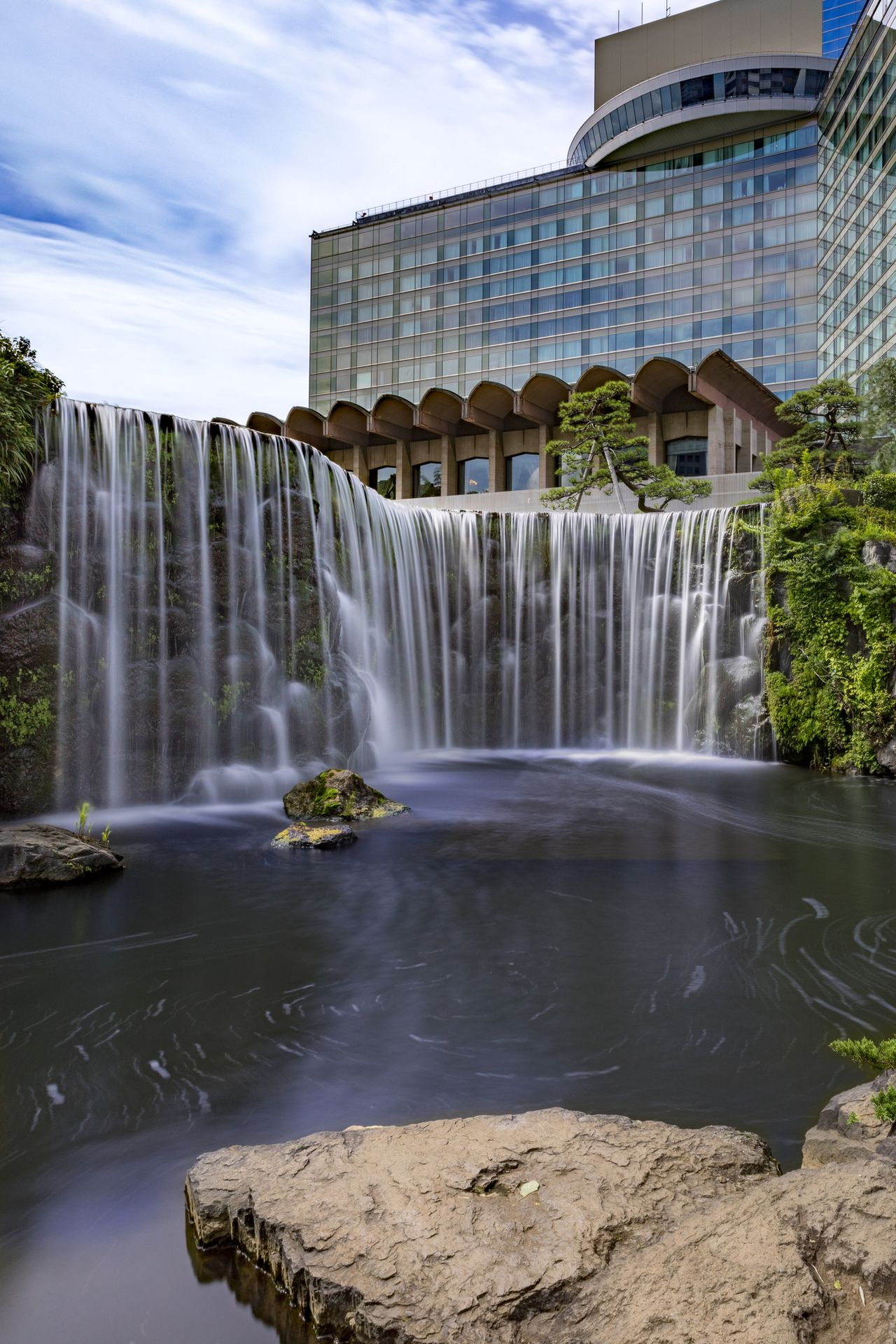
Royal Reduction: The Postwar Downsizing of Japan’s Imperial Family
Imperial Family- English
- 日本語
- 简体字
- 繁體字
- Français
- Español
- العربية
- Русский
Ending the War
On August 15, 1945, Emperor Shōwa announced Japan’s surrender to Allied forces, and Prime Minister Suzuki Kantarō’s cabinet resigned, but this did not guarantee that World War II was over. With discontent continuing among the military, and particularly the army, the emperor aimed to pick a successor to the premiership who would ensure an end to the war.
His choice, Prince Naruhiko, from one of the family’s collateral branches, had been critical of the war, although he was also opposed to the imperial family becoming involved in politics and initially refused the position of prime minister. Apparently, Emperor Shōwa’s worn-out appearance persuaded Naruhiko to take on the job.
He wrote in his diary, “I saw it as the highest responsibility as a Japanese citizen and a member of the imperial family, who had always enjoyed favorable treatment, to do my utmost to overcome this unprecedented crisis.”
Emperor Shōwa decided to deploy imperial family members to convey the message that the war was over. He sent princes serving in the military to spread the word to Japan’s overseas forces.
As prime minister, Prince Naruhiko called for penitence among all of Japan’s citizens. When the General Headquarters of the Supreme Commander for the Allied Powers ordered the dismissal of the home minister and top police officials, however, he submitted his resignation in protest against what he saw as interference in domestic affairs. He was in office for just 54 days.
Purging and Taxing
In December of the same year, GHQ ordered the arrest of suspected war criminals, including Prince Morimasa, who had served as a field marshal in the army. Morimasa was held in Sugamo Prison for class A crimes. This was seen by some as a threat against the imperial family, although he was released without charge after four months.
GHQ launched a purge of public services in January 1946, targeting militarists and supporters of the war, among others. News that Emperor Shōwa’s three brothers and Prince Naruhiko were among 15 imperial family members named in this purge shocked the nation. This was due to their serving in the military, although they were not ultimately purged at this time.
The imperial family finances also came under the spotlight. GHQ ordered an inquiry into the total assets of each member, to be subject to the highest tax rate, which had been hiked to 90%. Emperor Shōwa held total assets of ¥3.7 billion (equivalent to more than 100 times the amount in present value) according to calculations, and 90% of this went to the state via property tax. The Fushimi-no-miya branch had ¥7.9 million in assets, which was subject to 85% taxation after the subtraction of debts.
The new Constitution was promulgated in November 1946, and Emperor Shōwa assembled the imperial family members in collateral branches (only distantly related to him) to tell them that he would be forced to remove their imperial status. Article 88 of the Constitution was that “All property of the Imperial Household shall belong to the State,” so the imperial family no longer had the financial resources to support 11 collateral branches.
A Reduced Imperial Family
The formal decision to remove 51 imperial family members in 11 collateral branches, including 26 men in line to the throne, came at a meeting in October 1947. Prime Minister Katayama Tetsu noted that there was no need for concern about the succession at that time. After the reduction, there would still be Emperor Shōwa’s two sons, including the future Emperor Akihito, his three younger brothers, and one nephew.
Of the 51 people who left the family, 40 received one-off payments, excluding those with military records. The total outlay amounted to ¥47.5 million.
At a meal with those leaving the family some days later, Emperor Shōwa expressed his wish for ongoing warm ties, as nothing had changed in their relationships.
Selling to Live
Great changes awaited the former imperial family members, though. Fushimi Hiroaki, who was 15 when his imperial status was removed in 1947 and is now 90, recalled in a book he wrote:
“We had to pay a huge, unprecedented amount of tax, and the one-off sum we received was decided unilaterally, and soon disappeared. So, the former imperial family members had to sell to live. My branch’s land became the Hotel New Otani, and that belonging to the Takeda-no-miya became the Grand Prince Hotel Takanawa. But some branches had lived on Ministry of the Imperial Household land. For example, the Kaya branch really struggled to get by.”
He also noted that some of the newly ordinary citizens lost their assets through their inexperience in business, or by being cheated by criminals.

The Hotel New Otani, built on land formerly belonging to the Fushimi branch. (© Pixta)
The Higashikuni branch also underwent a stormy postwar period. Immediately after Prince Naruhiko, the former prime minister, became Higashikuni Naruhiko, an ordinary citizen, he was purged from public life, along with 10 other former imperial family members who had served in the military. He tried selling food and antiques, and ran a café in Shinjuku’s black market for a time, but all these ventures failed. He even founded his own religion, called Higashikunikyō.
His eldest son Morihiro failed the entrance exam for the University of Tokyo at the age of 30 in 1946. This result was a sign of the changing times. Like his father, he was purged after leaving the imperial family due to his military connections. As a commoner, he attended lectures at the university and started work at a company.
Morihiro had married Princess Shigeko, the eldest daughter of Emperor Shōwa, in 1943. There are stories that she propped up the family finances at times by doing piecework and lining up at local stores’ sales. Her account in a magazine that these hard times allowed her to find human happiness for the first time was also much talked about. However, whether related to these changes in lifestyle or not, she died of cancer at the young age of 35, leaving five children. The deep grief of her parents, the imperial couple, was such that they broke with tradition by attending the funeral of a “common citizen.”
Renewed Imperial Status?
Even after leaving the imperial family the former collateral branches maintain some connection. A group called the Kikuei Shinbokukai was established to promote friendship, with gatherings arranged from time to time. For example, the members got together in 2014 at the Akasaka Estate to celebrate the eightieth birthday of Emperor Akihito.
The former members also attend events like the emperor’s birthday and New Year celebrations, and they were present at Emperor Shōwa’s funeral. On such occasions, they are ranked behind the imperial family, but ahead of citizen representatives, including the prime minister.
There is now discussion of restoring former branches to ensure that the imperial family has enough members to secure the succession and perform official duties. What do the members of these branches think of this idea? At a budget meeting in March 2021, Chief Cabinet Secretary Katō Katsunobu said that he had not asked them and had no plan of doing so. Under these circumstances, it is unclear whether they would welcome renewed imperial status.
Fushimi Hiroaki wrote passionately on the topic in a recent book. “If his imperial majesty ordered me to return to the family, or the state asked me to, I feel I would have to do so.” However, he also said that it would not be possible to suddenly become an imperial prince.
It is now 75 years since the collateral branches lost imperial status. While they include some elderly members, the descendants of those subject to the initial 1947 action have been raised as ordinary citizens since their birth. It is asking a lot to expect them to instantly become part of the imperial family. This seems to be what Fushimi was saying.
Nonetheless, the imperial family may face a situation where the pressures of reduced size mean that it must make a decision between restoring the former branches, so as to maintain the limit on succession to male descendants in the male imperial line, or allowing princesses closely related to the emperor to ascend the throne.
(Originally published in Japanese on April 19, 2022. Banner photo: Prince Naruhiko, at front, with his new cabinet in a commemorative photo from August 17, 1945. © Kyōdō.)